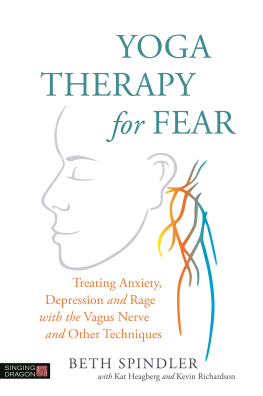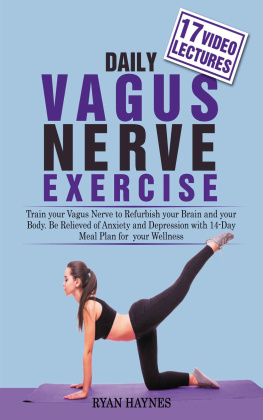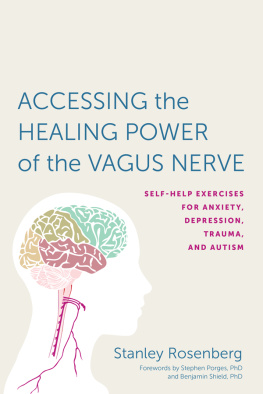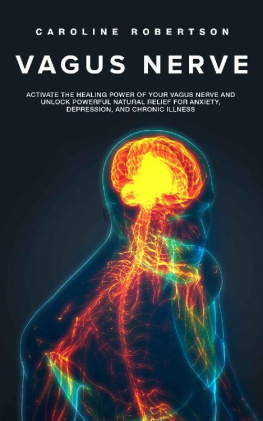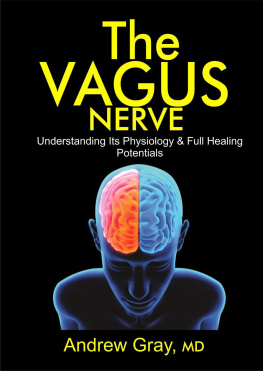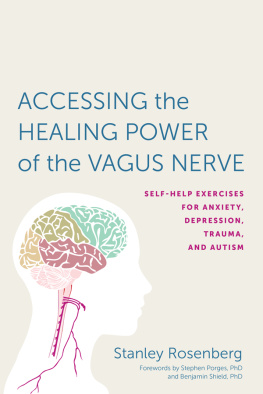
YOGA
THERAPY
for FEAR
Treating Anxiety, Depression and Rage with the Vagus Nerve and Other Techniques
BETH SPINDLER
with Kat Heagberg and Kevin Richardson

Contents
Preface
This book began when I was asked to review my friends, body genius Noah Karrasch, excellent book BodyMindCORE Work for the Movement Therapist , published by Singing Dragon. I have written about yoga and Yoga Therapy for Yoga International for years and my fine editor at Jessica Kingsley Publishers, Sarah Hamlin, was kind enough to read my articles and approached me about writing a book on Yoga Therapy for Singing Dragon.
A glossary of Sanskrit terms is provided at the end of the book for those unfamiliar with them.
CHAPTER 1
Unearthing Fear
The Methodology
The enemy is fear. We think it is hate, but it is fear.
Mahatma Gandhi
The sniggering gargoyle perched on my computer. It hissed when I attempted to elaborate beyond a title. While I had published tons of articles about therapeutic yoga, yoga philosophy, biomechanics, debunking myths, and a little bit of everything to do with yoga, the beast jeered, but a book?
Even though Ive practiced Yoga Therapy with countless people suffering from physical and emotional trauma and been a part of medical and psychotherapy teams that assist people in some of the darkest times, this fear demon insisted that a Yoga Therapist was not up to the task of writing a book addressing fear, deriding the fact that I do not have a PhD in neuropsychology and perhaps it would be best to keep the practices that I use, teach, and have found beneficial sequestered in the therapy room. But, because of the reaction I receive when I talk to students, groups, and clients about finding a path to courage and how it can affect their healing, I know that addressing this topic is needed by clinicians, therapists, and individuals wanting to delve deeper into helping clients and students recover from trauma and phobia, and that applications of yogic techniques can help us to live fearlessly.
How Fear Changes Us
Fear invokes wars, elects tyrants to government offices, sells cosmetics and medications, belittles the human spirit, and tells us we are not enough. Think about it. According to studies involving fear and loneliness by John Cacioppo, PhD, Keeping ourselves safe is a priority. We listen when someone warns us of the dangers of terrorists or impending disaster and tend to tune out compliments, kindnesses, and the brighter positive angle of a situation. We choose the candidate, the minister, the news that tells us how desperately at risk we are, rather than trusting in a system or process we truly believe to be good, life-affirming, or right. We tend to act from our own set of fears, defenses, conclusions, and desires to survive. Often, our reactions to circumstances are related to our past experiences, and in particular to the first few times that we experienced a similar situation to the one we are currently reacting to (usually something that happened when we were young).
Fear is addictive in that we seek out news and social media stories to reinforce our fears. Some households keep fear-based television news forefront from the time they wake up until they go to bed. We see clickbait images on our computers that upset or frighten us, but we cant resist the temptation to take a peek. We even enjoy (or think we enjoy) Halloween scares and gory movies as entertainment. Its that misguided survival drive that pushes us toward intentionally seeing if we are threatened. Margee Kerr, PhD, sociologist and author of SCREAM: Chilling Adventures in the Science of Fear , Its as though realizing we arent going to die produces a natural high and we become hooked on the scare. But we may wonder why we are tired. Feeling afraid exhausts the nervous system.
at the top of the brainstem that we need to react (often in ways that would not seem rational to us in a more tranquil or resilient state). Our breathing and heart rate speed up, preparing the body to run away or fight. Blood flow is directed away from digestion and toward the big muscles of the extremities, enabling faster movement or the ability to hit or throw harder. The pupils dilate so that we can better see what is lurking in the dark. We may also freezethe most primitive response of allor hide from danger even, with the heart beating wildly. In fear states the hairs on the back of the neck bristlefor our ancestors this may have made them appear larger or more aggressive.
While a scary movie may trigger a jump or shaky reaction, we dont run away or strike out, because the rational mind can differentiate between real and fabricated danger; but the body is still cranking adrenaline and affecting every organ as though the murderous clown was waiting in the lobby.
But not all fear displays itself so blatantly as jumping, screaming, or bristling neck hairs. Our daily, more mundane fears underlie the three most daunting words in our language, blame, shame, and should, and take their exhausting toll as well. These oppressive words can represent the fight, flight, or freeze response of the sympathetic nervous system and often on a less detectable, yet similarly exhausting and erosive way.
When we believe we are threatened, we blame others because we fear a differing opinion or cant bear to feel responsible for our own issues. If we can cast fault on another, there is some temporary relief from fear. Blaming is the fight response. We project the cause of our suffering and demonize the other.
Shaming ourselves and others is injurious to all involved and is a way of running away from our self-worth, fleeing from remembering who we are and honoring those in our lives. Shame keeps us small and binds us to repeating behaviors that seem safe but are actually harmful. Addiction is a prime shame response.
Should is the bondage we cast on ourselves or others to restrict and control. Shoulding is a freeze response: we hold our ground and disassociate from the present; we project an imaginary scenario on what has been done or what we believe must be done, from a place of inactivity. The should holds us hostage and in a place of judgment. In that land of should, we see ourselves no longer in the place of fear, but somehow standing above or below it, stating how things might be done from a distance.
We avoid situations of uncertainty or present ourselves in costumes of habit to feel safe, but its the experience of taking the job, risking the failure in a social situation, or standing our ground in the face of injustice that may be the greatest catalyst to our growth. What is it we are afraid of losing? The yogic sages had answers that ring true on a deep level. In Swami Madhavanandas translation of the Vairagya Shataka ( The Hundred Verses on the Renunciation ), Bhartrihari describes how fear is associated with everything in the world:
In enjoyment there is the fear of disease; in social position, the fear of falling off; in wealth, the fear of hostile kings; in honor, the fear of humiliation; in power, the fear of enemies; in beauty, the fear of old age; in scholarship, the fear of opponents; in virtue, the fear of calumny; and in the body, the fear of death. Everything in this world is fraught with fear. Renunciation alone stands for fearlessness. (Verse 31)
Author of The 4-hour work week Tim Ferriss said, What we fear most is usually what we most need to be doing. And unless that is standing in front of an oncoming train, it may be true.
Next page
